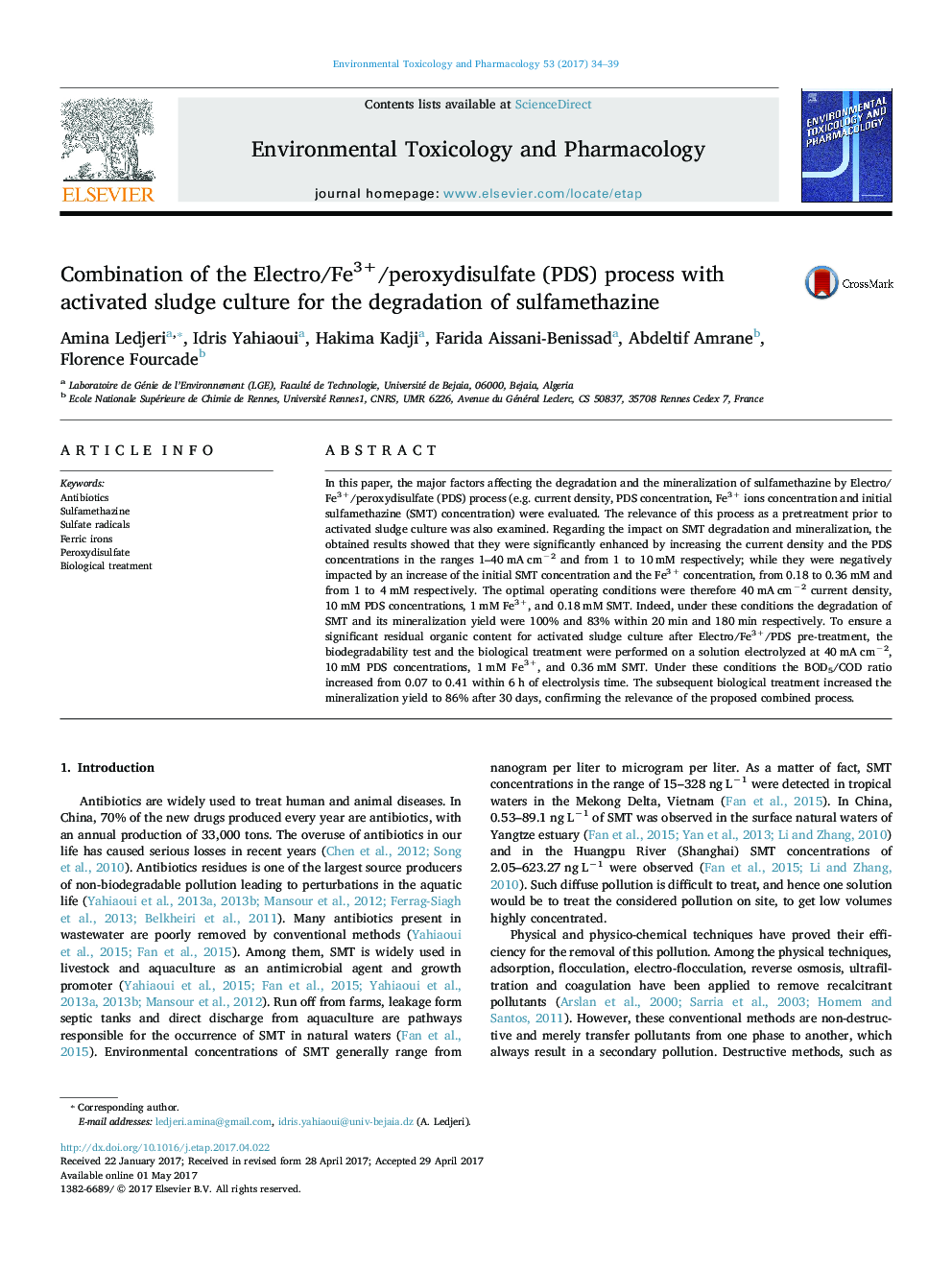| کد مقاله | کد نشریه | سال انتشار | مقاله انگلیسی | نسخه تمام متن |
|---|---|---|---|---|
| 5559827 | 1561691 | 2017 | 6 صفحه PDF | دانلود رایگان |

- The Electro/Fe3+/Peroxydisulfate process was used for degradation of sulfamethazine.
- 40Â mA/cm2 current density and 0.18 mM of SMT concentration were the optimal values.
- Optimal concentrations of PDS and Fe3+ were 10Â mM and 1Â mM, respectively.
- The by-products formed after 6Â h of electrolysis were biodegradable.
- The subsequent biological treatment increased the mineralization yield to 86%.
In this paper, the major factors affecting the degradation and the mineralization of sulfamethazine by Electro/Fe3+/peroxydisulfate (PDS) process (e.g. current density, PDS concentration, Fe3+ ions concentration and initial sulfamethazine (SMT) concentration) were evaluated. The relevance of this process as a pretreatment prior to activated sludge culture was also examined. Regarding the impact on SMT degradation and mineralization, the obtained results showed that they were significantly enhanced by increasing the current density and the PDS concentrations in the ranges 1-40Â mAÂ cmâ2 and from 1 to 10Â mM respectively; while they were negatively impacted by an increase of the initial SMT concentration and the Fe3+ concentration, from 0.18 to 0.36Â mM and from 1 to 4Â mM respectively. The optimal operating conditions were therefore 40Â mAÂ cmâ2 current density, 10Â mM PDS concentrations, 1Â mM Fe3+, and 0.18Â mM SMT. Indeed, under these conditions the degradation of SMT and its mineralization yield were 100% and 83% within 20Â min and 180Â min respectively. To ensure a significant residual organic content for activated sludge culture after Electro/Fe3+/PDS pre-treatment, the biodegradability test and the biological treatment were performed on a solution electrolyzed at 40Â mAÂ cmâ2, 10Â mM PDS concentrations, 1Â mM Fe3+, and 0.36Â mM SMT. Under these conditions the BOD5/COD ratio increased from 0.07 to 0.41 within 6Â h of electrolysis time. The subsequent biological treatment increased the mineralization yield to 86% after 30Â days, confirming the relevance of the proposed combined process.
79
Journal: Environmental Toxicology and Pharmacology - Volume 53, July 2017, Pages 34-39